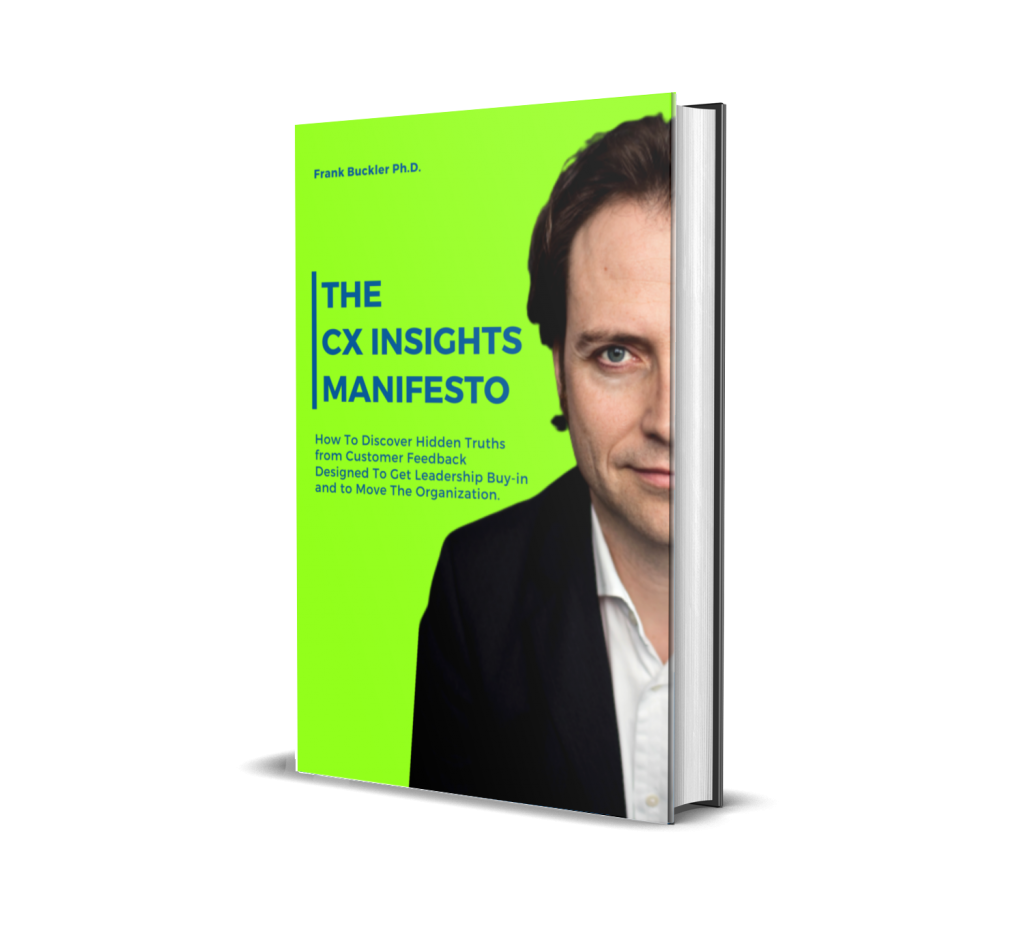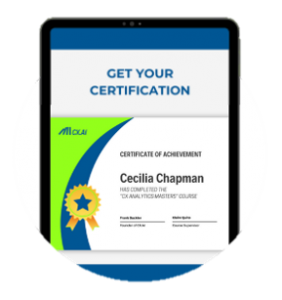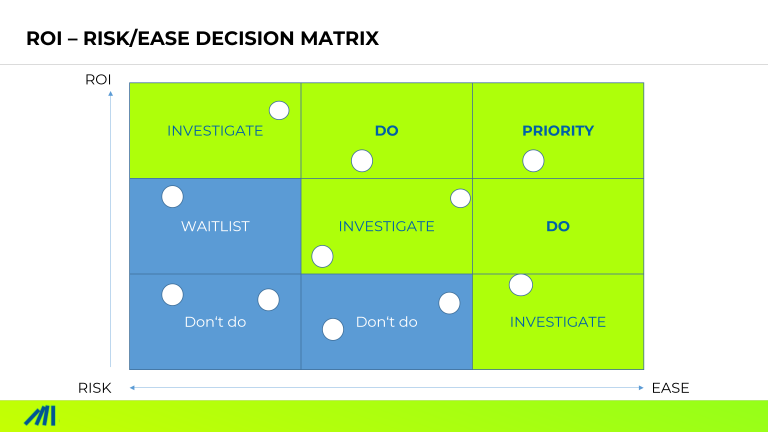“adim” is the Turkish expression for “step-by-step”. For us it has the steps of first, defining potential actions, second, quantifying the effect on loyalty, then third, measuring the impact on the bottom line and finally structuring the decision making by putting the actions in an ROI-Risk grid.
- ACTIONS: Manifest hypotheses how actions, initiatives will change the customer experience and perception in the raised topics
Internal stakeholders have opinions on what should be done – even before analysis. Jot them down and let them be defined in a granular way.
- Actions: Which actions or initiatives could we do to act on the hypothesis?
- Goal: Which customer perceptions (categories mentioned in the survey) would change and how much?
- Costs: What’s the ballpark investment of time and money?
- Risk: Is it easily done or is in unclear or risky to execute the initiative?
You may wonder if this exercise isn’t better of done after survey and analysis. Interestingly, doing it afterward leads to the fitting goal, cost, and risk estimation to purpose.
You may also think “isn’t that too much work”. If you treat it as a PhD thesis – yes it is. Otherwise, each item cost 10 minutes to define. Ball bark estimations are good enough at this point and will be challenged later anyways.
Also, doing the exercises beforehand leads to exciting gamification. Everyone should be allowed to set up his own initiative proposal and then …. Let the data and the customer speak.
- DRIVERS: Driver analysis on customer topic to drive NPS
Now we need to understand the relevance and impact of what customers say (customer topics) and the impact on loyalty and respective outcomes.
All this is well explained in my article Predictive Qual . It’s a process that simply uses the data you already have.
When you are now think “ok, but we kind of have this already” then please take a look at this article. Way less than 5% of the corporation today do it the right way.
- IMPACTS: Modeling to measure the unique impact of NPS on customer value, revenue, churn, and costs
At the end, nobody cares about NPS points. What counts are profits, revenue or cost figures. You need to build the link between the CX measure and fiscal measures.
It seems obvious how to do it. Just take a look at how much promoters buy more, churn less, and create fewer costs. If you try this out too often, it shows no correlation!
This is the lesson taught in the first-semester statistics class: spurious correlation does not prove causation.
Modeling helps as customer profile data typically help to clean out cofounding biases and to measure the true impact of NPS.
- MATRIX: Tie it together in an ROI-RISK decision matrix.
Thru steps 1 to 3 we have it all to make informed decisions.
We can simulate the impact of hypnotized actions onto the bottom line (RETURN ON…). We have estimated the needed investment (… INVESTMENT) and defined the risk or ease of that action. This enables us to put everything in a decision matrix with this norm strategies:
- DO IT – High ROI, low risk
- EVALUATE – High ROI, medium risk or medium ROI, low risk
WAIT – all other combinations.













